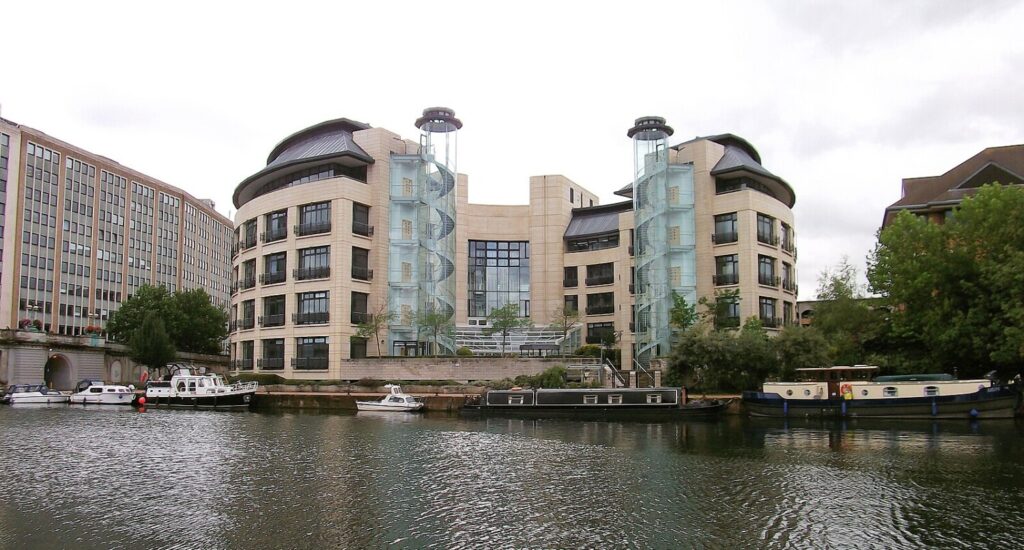Trump’s Immigration Policy – Destroying the American Dream?
Since President Donald Trump took the office in 2017, the U.S. refugee resettlement program has been sharply cut. In 2018, for the first time since the establishment of the resettlement program in 1980, the United States stepped down as a global leader on refugee admissions. In the same year, the United States resettled 22,491 refugees, while in 2016 under the Obama administration – 84,994 refugees (0.4 percent of the 22.5 million refugees registered with the United Nations High Commissioner for Refugees (UNHCR) worldwide in 2016). In 2019, the Trump administration announced that the new fiscal 2020 refugee ceiling would be a mere 18,000 admissions, which is an all-time low. 4,000 refugee slots will be reserved for Iraqis who worked with the United States military, 1,500 – for Central American refugees, and 5,000 – for people persecuted for their religion. The remaining 7,500 slots are for those who are seeking family unification and have been cleared for resettlement.
Due to the slowdown of every step of the resettlement process, the number of refugees set to be admitted might be far lower than the official ceiling. In 2018, U.S. Citizenship and Immigration Services (USCIS) announced its ‘last in, first out’ policy meaning it would process recent affirmative applications for asylum before older ones. A year late, the Trump administration closed 21 international immigration offices. Thus, only 465 Iraqis got in due to the Muslim ban and only 503 refugees from Central America were admitted although the slot allowed for thousands in 2018.
Trump’s Taking a Grip on the U.S. Immigration Policy
Kerri Talbot, director of federal advocacy for the pro-migrant Immigration Hub said, ‘he [D. Trump] is basically trying to eviscerate and totally destroy the program, Their ultimate goal is just to decrease legal immigration into the United States, including refugees.’
The executive order, the so-called Muslim ban, that Trump signed on January 27, 2017, suspended entry for citizens from Iraq, Iran, Libya, Somalia, Sudan, Syria, and Yemen for 90 days (later Sudan was omitted, while North Korea and Venezuela were added). The executive order suspended the entry of all refugees for 120 days and stopped the admissions of Syrian refugees fleeing the Syrian Civil War. In October 2017, the Trump administration ended the ban on refugee admissions but added tougher screening rules for applications from 11 nations. Such a policy led to a 40 percent drop in admissions. In January 2020, Trump banned refugees’ and migrants’ entries from six more countries: Nigeria, Myanmar, Eritrea, Kyrgyzstan, Sudan, and Tanzania.
The ‘Deferred Action for Childhood Arrivals’ (DACA) program from 2012 launched by the Obama administration enabled young adults arrived in the United States as children to stay and work legally without fear of deportation. This program has helped at least 800,000 children to stay legally in the United States. The Trump administration has not accepted new DACA applications since 2017, although it allowed current holders to renew its status every year instead of once in two years.
The practice of separating minor children entering the United States from their parents was among other restrictive measures. In 2018, under the ‘zero tolerance’ policy the authorities tore families who entered the United States illegally apart: parents were sent to federal jails while children to shelters. Almost 5,000 children were separated from their parents before the practice was ended in June 2018. This number might be higher because the Department of Health and Human Services (HHS) was not able to identify all families torn apart.
In June 2018, the Department of Justice announced that persecutions based on gender violence or gang violence are not lawful reasons for calming asylum. Moreover, the Trump administration has initiated the so-called ‘Remain in Mexico’ policy, under which the government can release migrants with asylum claims to Mexico to await their asylum hearings in the United States. According to the Human Rights First, at least 636 of the migrants returned to Mexico suffered violent crimes, and the asylum admission rate for this program is only 0,1% comparing to 20% among other immigrants.
In 2019, the United States signed ‘asylum cooperative agreements’ with the states of the Northern Triangle of Central America: Honduras, Guatemala, and El Salvador. Under these agreements, the United States can send asylum seekers to those countries where they will apply for asylum instead of doing that in the United States. Many asylum seekers flee Northern Triangle countries, which are not safe third countries, to escape violence. Thus, the United States by returning the asylum seeker violate their right to seek protection through a ‘full and fair procedure’.
Even though during his presidential campaign Donald Trump had repeatedly said that illegal migrants are criminals, his policy has not been limited only to restrictions on refugee admissions. Trump has also supported limits on legal immigration and guest-worker visas, including a temporary suspension on granting green cards. The National Foundation for American Policy data shows that the denial rates for H-1B visas (granted to high-skilled workers) have doubled since Trump took the office. On top of that, the U.S. Citizenship and Immigration Services proposed fee increases on asylum applications within the United States, DACA recipients, and citizenship applications from green cardholders.
Consequences and Implications
Until 2017, the United States was the world leader in refugee resettlement and it was the top destination for the refugees. Thus, the attitude of the new administration towards refugees and immigration may impact refugee resettlement across the globe. According to the UNHCR, in 2017, there was a 54% drop in the number of resettlement places available globally compared to 2016. Curtailing its refugee resettlement program, the United States loses its moral leadership and can’t ask other countries to take responsibility.
Trump’s anti-immigration policy won’t necessarily lead to economic prosperity in the long run. According to research by William Frey of the Brookings Institution, the result of the decline in foreign-born populations from 2010 to 2018 in five big metro areas led to the rise in wages by 5% a year. However, restrictions on Chinese workers in 1909 and the mass deportation of Mexicans during the Depression ultimately offered little benefit to native workers. A short-term wage boost follows by the reorientation of production towards less labor-intensive products. Thus, companies invest more in labor-saving machinery, which is accompanied by a decline in salaries.
Further bans on worker visas and extensions of restrictions on new green cards motivate American companies to move jobs out of the United States: Duolingo and Boston Consulting Group have already announced that they would rather move jobs to Canada than canceling job offers to workers affected by the new visa rules. The new immigration policy is also related to the decline in new international student enrollments, sometimes caused by problems related to the visa application process. International students significantly contribute to the U.S. economy by paying tuition fees and other education and living-related services.
Immigrant entrepreneurs have been a crucial part of America’s success story: in 2019, the New American Economy Research Fund found that almost 45% of Fortune 500 companies were founded by immigrants or their children. Migrants create trade links between America and their home countries. Foreign investment and innovation are linked to immigration; thus, visa bans will likely send innovation and investment to countries that welcome foreign talent.
Conclusion
Trump’s anti-migration rhetoric undermines American values by making immigrants the target of hate and mistakenly making them the cause of crime and terrorism, and the economic recession. As the U.S. population ages, America will need more workforce to keep the economy rolling. The Trump administration will probably achieve temporary economic growth but it might be at the cost of the country’s future prosperity.
References
Amanda Holpuch (2019), ‘Trump’s war on refugees is tearing down US’s life-changing resettlement program’, The Guardian. Available at: https://www.theguardian.com/us-news/2019/jun/26/trump-refugees-us-resettlement-program [Accessed on 30 July 2020]
American Friends Service Committee (2020), ‘How Trump is making it harder for asylum seekers’. Available at: https://www.afsc.org/blogs/news-and-commentary/how-trump-making-it-harder-asylum-seekers [Accessed on 30 July 2020]
American Immigration Council (2020), ‘An Overview of U.S. Refugee Law and Policy’. Available at: https://www.americanimmigrationcouncil.org/research/overview-us-refugee-law-and-policy [Accessed on 30 July 2020]
Britta Glennon (2020), ‘Why the Trump administration’s anti-immigration policies are the United States’ loss and the rest of the world’s gain’, Brookings. Available at: https://www.brookings.edu/blog/up-front/2020/07/20/why-the-trump-administrations-anti-immigration-policies-are-the-united-states-loss-and-the-rest-of-the-worlds-gain/ [Accessed on 28 July 2020]
Catherine Rampell (2019), ‘There’s no other way to explain Trump’s immigration policy. It’s just bigotry’, The Washington Post. Available at: https://www.washingtonpost.com/opinions/theres-no-other-way-to-explain-trumps immigration-policy-its-just-bigotry/2019/11/25/348b38f4-0fcc-11ea-9cd7-a1becbc82f5e_story.html [Accessed on 29 July 2020]
International Rescue Committee (2020), ‘How the Trump Administration is eliminating asylum in the U.S.’. Available at: https://www.rescue.org/article/how-trump-administration-eliminating-asylum-us [Accessed on 29 July 2020]
Jens Manual Krogstad (2019), ‘Key facts about refugees to the U.S.’, Pew Research Center. Available at: https://www.pewresearch.org/fact-tank/2019/10/07/key-facts-about-refugees-to-the-u-s/ [Accessed on 30 July 2020]
Michael Maciag (2017), ‘The Mythical Link Between Immigrants and High Crime Rates’, Governing. Available at: https://www.governing.com/topics/public-justice-safety/gov-undocumented-immigrants-crime-pew.html [Accessed on 31 July 2020]
New American Economy Research Fund (2019), ‘New American Fortune 500 in 2019: Top American Companies and Their Immigrant Roots’. Available at: https://data.newamericaneconomy.org/en/fortune500-2019/ [Accessed on 30 July 2020]
The Economist (2020), ‘Immigration to America is down. Wages are up’. Available at: https://www.economist.com/united-states/2020/02/13/immigration-to-america-is-down-wages-are-up [Accessed on 29 July 2020]
The White House (2020), ‘Presidential Determination on Refugee Admissions for Fiscal Year 2020’. Available at: https://www.whitehouse.gov/presidential-actions/presidential-determination-refugee-admissions-fiscal-year-2020/ [Accessed on 31 July 2020]



